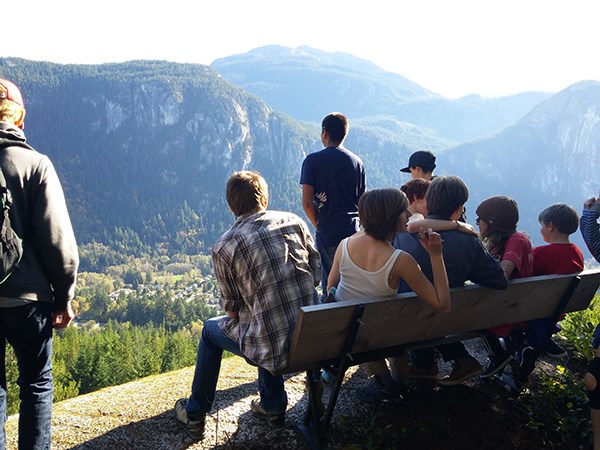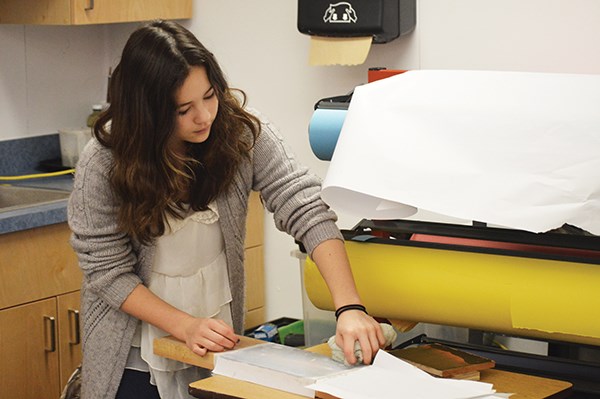Last fall, a small group of students from Grades 7 to 12 decided to venture off in a different direction and learn in a new way.
The Learning Expeditions program, housed in the former Stawamus Elementary building, offers them an opportunity to learn in a different way.
Rather than the traditional model of teaching curriculum material aimed at eventual testing, the inquiry- or project-based process starts with a big idea – for example, effecting positive change – followed by essential questions that guide what the students will be working on. Teachers Cory Hartling, Brittany Carter and Alexandra Norris help guide the way. “Everything we do is through the lens of a project,” Hartling said. “Any projects we do in the future we try to link to our big idea.”
Through the fall, this method led students to tackle issues as viewing graffiti as art, effectively transferring knowledge through media such as video and using entrepreneurship to empower people. For example, when considering the idea of how to be entrepreneurial and help others, the students have put on sales of their own crafts on exhibition nights, which they then use to help charities such as Squamish Helping Hands Society, the SPCA or Kiva microloan program.
The project-based approach provides students with an opportunity to pursue what most interests them but also challenge themselves in new ways.
“It’s really neat to see this happening and come alive,” Hartling said.
Student Ryder French put together some artistic bookmarks with quotations from famous people for sale at the school’s craft sale before Christmas. “I’m not very crafty, but I do have a knack for quotes,” he said.
Beyond this, the project has allowed him to research the history behind the quotes or the accuracy of quotes we see online. The process at Learning Expeditions looks different from what one might expect inside a classroom, starting with the students holding “circle” a couple of times a day as a way to discuss school, their project or life in general.
The students also have “cave” time, when they can concentrate on their project, the theory being that the students need opportunities to go more deeply into learning about a subject.
“They’re trying to answer the questions on their own,” Hartling said.
For student Keanna Lee, the program allows her to delve more deeply into her artistic pursuits. She came into the program with an interest in photography and drawing and is now learning new ways to explore the arts, such as a project transferring photo images onto wood.
“It’s actually something I just learned,” she said.
French echoes this sentiment about the program’s opportunities, saying he switched to Learning Expeditions after seeing a presentation last year because he was not being challenged in the regular school stream. It has allowed him to take on projects such as writing a novel as well as explore the ancient history of phenomenon such as graffiti.
“I’m going out and doing research and learning for myself,” he said.
When it comes to the questions that direct their learning, these have to be deep, meaning open to debate and not something that is a simple Google query.
Just as important as solo time is the process of collaboration and critiquing each other’s work, something that meant a bit of an adjustment for students.
The reason behind this is to get students used to the idea of constantly questioning, reflecting upon and refining their work. To do this, they need honest feedback about what works and what could be better.
“The students are getting used to the language of critique,” Hartling said. “We want them to keep revising and keep revising.”
The teacher likens the process to a thesis defence that a post-grad student would face, and if it was an adjustment at first, many students have adapted to where they are happy to ask for feedback.
At this month’s school board meeting, Hartling appeared before the trustees with a few students to show them a “dilemma session” that makes up part of a student’s personal inquiry. Through this, during a set time, a student quietly listens to questions and comments about their work from others, usually a mix of older and younger students. The student then has the chance to talk about what comments were most helpful or clarify any points they did not understand, and they can repeat the session multiple times if they feel it will help them.
Lee, for one, credits the critique process for helping her with her work.
“I find critiquing really helps,” she said. “Several drafts are better than one.”




